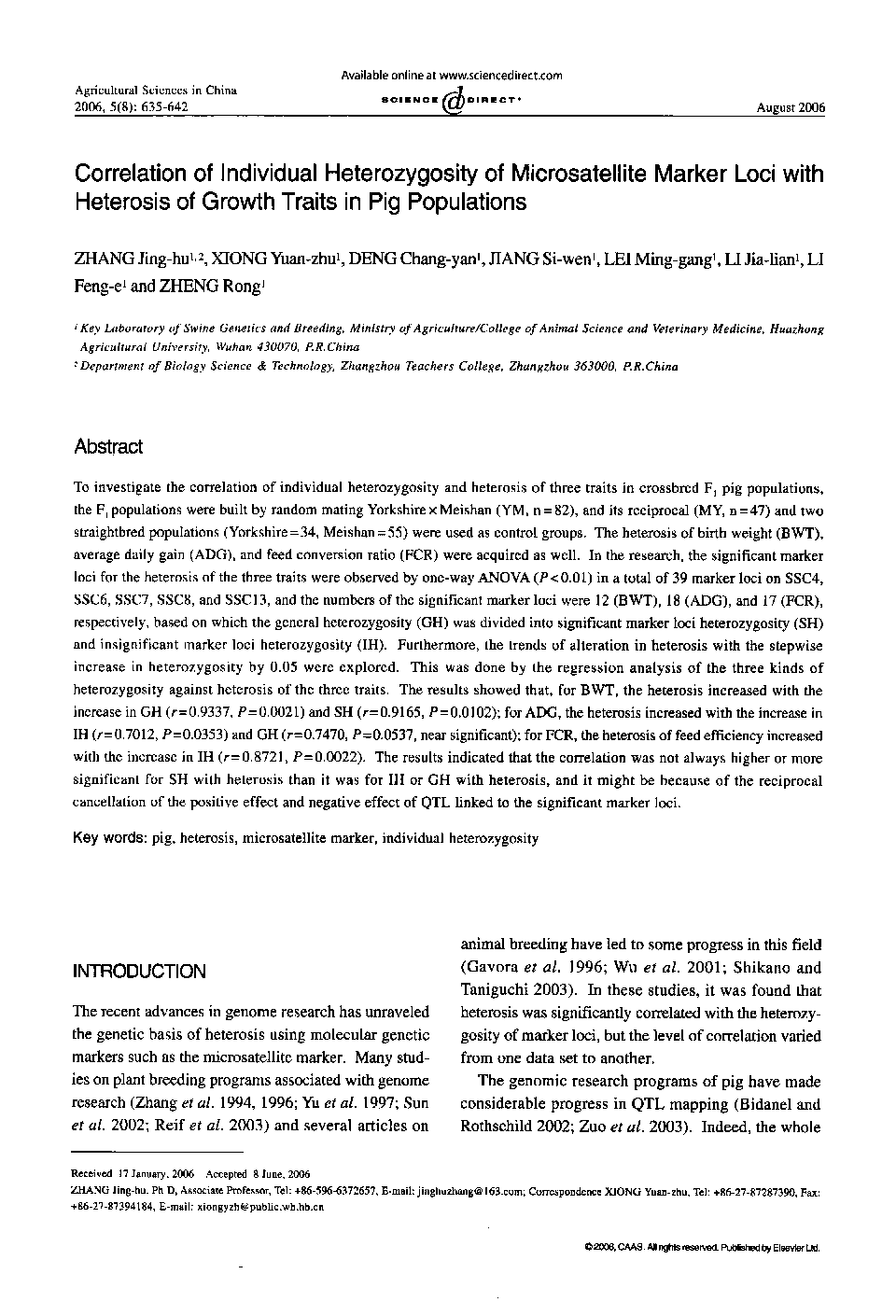| Article ID | Journal | Published Year | Pages | File Type |
|---|---|---|---|---|
| 4491012 | Agricultural Sciences in China | 2006 | 8 Pages |
To investigate the correlation of individual heterozygosity and heterosis of three traits in crossbred F1 pig populations, the F1 populations were built by random mating Yorkshire × Meishan (YM, n = 82), and its reciprocal (MY, n = 47) and two straightbred populations (Yorkshire = 34, Meishan = 55) were used as control groups. The heterosis of birth weight (BWT), average daily gain (ADG), and feed conversion ratio (FCR) were acquired as well. In the research, the significant marker loci for the heterosis of the three traits were observed by one-way ANOVA (P<0.01) in a total of 39 marker loci on SSC4, SSC6, SSC7, SSC8, and SSC13, and the numbers of the significant marker loci were 12 (BWT), 18 (ADG), and 17 (FCR), respectively, based on which the general heterozygosity (GH) was divided into significant marker loci heterozygosity (SH) and insignificant marker loci heterozygosity (IH). Furthermore, the trends of alteration in heterosis with the stepwise increase in heterozygosity by 0.05 were explored. This was done by the regression analysis of the three kinds of heterozygosity against heterosis of the three traits. The results showed that, for BWT, the heterosis increased with the increase in GH (r=0.9337, P=0.0021) and SH (r=0.9165, P=0.0102); for ADG, the heterosis increased with the increase in IH (r=0.7012, P=0.0353) and GH (r=0.7470, P=0.0537, near significant); for FCR, the heterosis of feed efficiency increased with the increase in IH (r=0.8721, P=0.0022). The results indicated that the correlation was not always higher or more significant for SH with heterosis than it was for IH or GH with heterosis, and it might be because of the reciprocal cancellation of the positive effect and negative effect of QTL linked to the significant marker loci.
